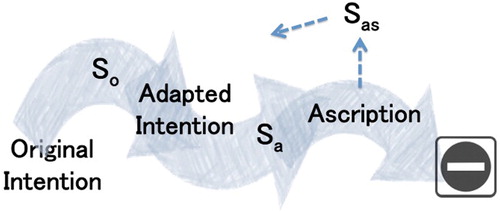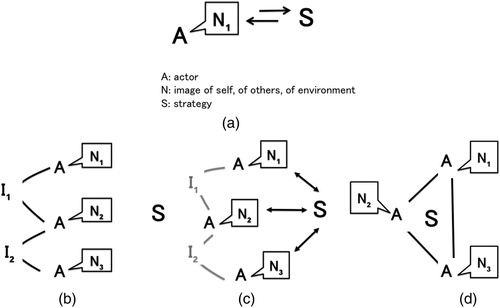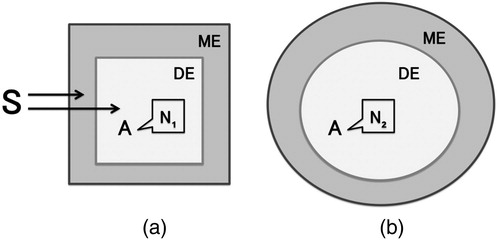Figures & data
Figure 1. An example of a strategy path. An original intention produces a strategy (So), which eventually requires adaptation (Sa). This adaptation partly misses the mark, yet in the new, unexpected, situation, the past is reinterpreted and strategy is ascripted to it in hindsight (Sas). In this example, no new strategic episode occurs afterwards. In other cases, the ascription can engender a new strategic episode.

Figure 2. Strategy is shaped by narratives held by actors (based on images of self, others and of environment) while strategy can also reshape those narratives (2a). (b–d) illustrate a possible path of strategizing. Actors (A) coordinate actions through institutions (I), as in 2b. A strategy (S) can bring together the actors and their narratives, leading to a fading, a loss of function of the earlier institutions (2c). In 2d we see the strategy (S) replacing these institutions, playing the role of main coordinating institution. In other cases, S can include and coordinate existing institutions.


